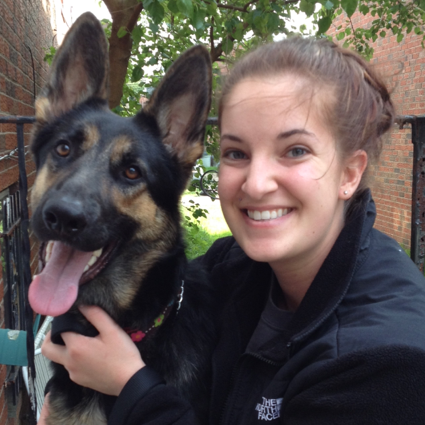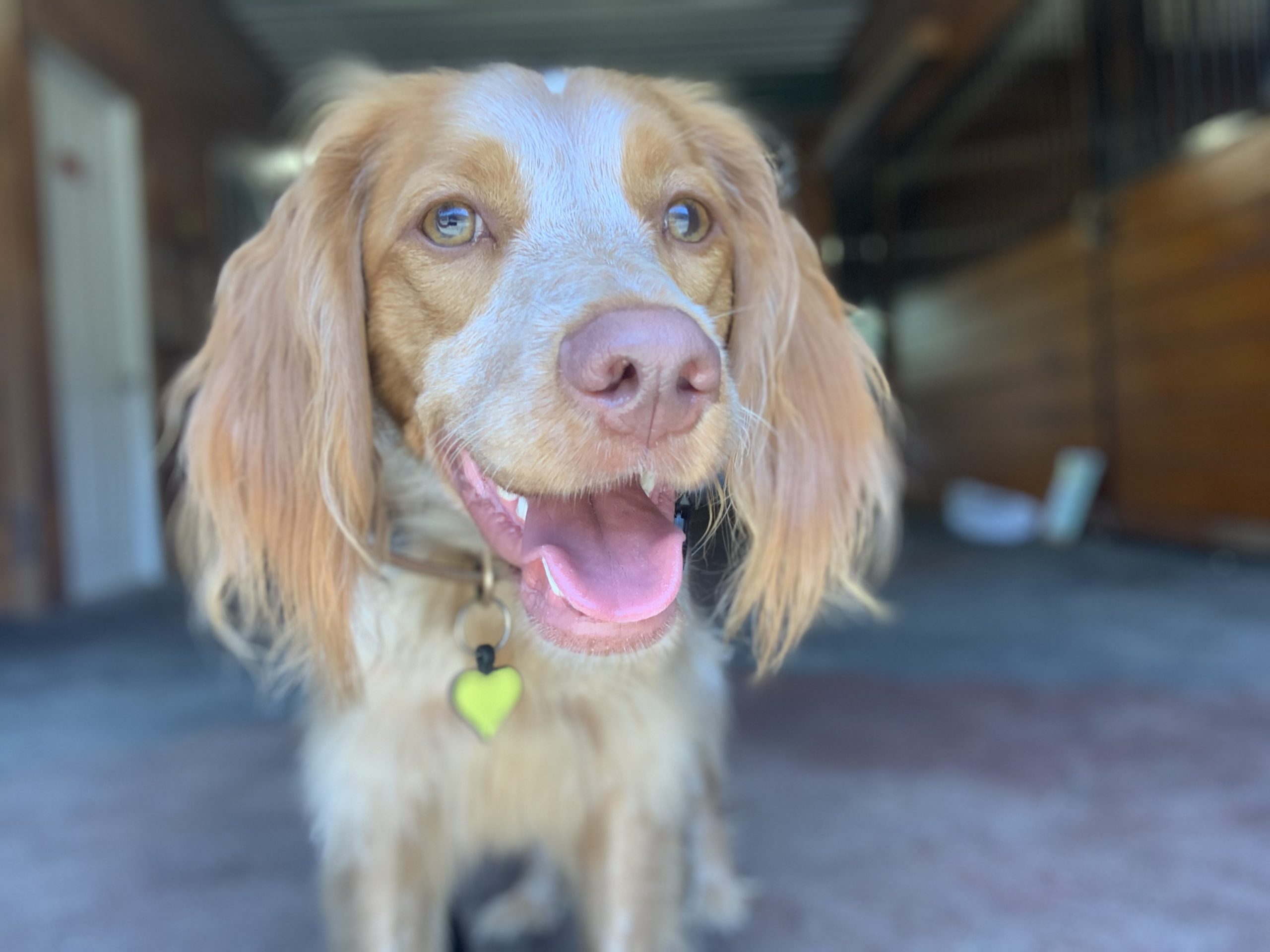By Dawn Heiderscheidt BS, MOT, OTR/L
Ever sit there, looking at your dog, who’s just staring at you after a long day, and think, “Could you just use your words?”
You KNOW they need something–you just don’t know what. How about when our dogs are cuddled in close, and we think, “I wonder what they are thinking?”
Or when you find your dog or new puppy chewing, and they begin to show you a downturned head, ears and big eyes almost to say “I’m sorry,” and you think, “They KNOW what they did!” (They don’t–but that’s another article.)
Here is the thing: we are humans and we communicate with words. Dogs aren’t humans. Dogs are nonverbal communicators and they are MASTERS of it.
When training hits a hiccup or we feel like the house is in total chaos despite our best efforts, it typically means the people and the dogs are NOT communicating. But what if we learned how they communicated instead of just teaching dogs to communicate how we humans do? And what if we used both to create a sense of trust and progress?
The ASPCA says, “Dogs communicate with one another and with us using their own elegant, non-verbal language, [with] seven important aspects of a dog’s body: eyes, ears, mouth, tail, sweat and overall body posture/movement.”
If I can teach you one thing about dogs right now, it’s that ALL of the body matters and we cannot ISOLATE any one feature and assign an emotion to it. For example, tail wagging does NOT always mean the dog is happy. A lot of these signals will contradict each other, which can be frustrating. This is why you need to look at the whole dog to get the full picture.
EYES
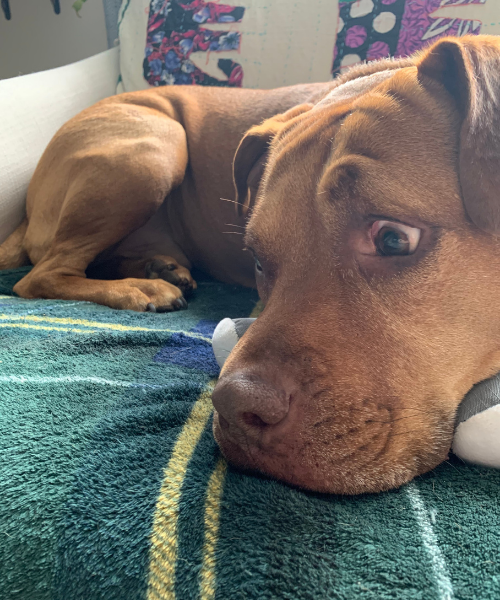
We’ve all heard the saying, “Eyes are the windows to the soul.” It’s not wrong. For dogs, we need to consider the eye shape, how much of the eye is showing, the size of the pupils, and context.
Dogs who are overaroused (overly happy, fearful, or just jazzed) typically have dilated pupils and wide, round eyes.
Dogs that are calm/relaxed tend to look like they are squinting. Their eyes are soft or “droopy” when totally relaxed and feeling safe.
If you see the whites of a dog’s eyes (“whale eyes”) then the dog may be communicating fear or discomfort.
Additionally, staring at a dog, especially not your own dog, can be aggressive. It can be threatening. If you are making direct eye contact with a dog and they look away, they are not ignoring you. They are communicating that they are uncomfortable, or they are demonstrating that they are not a threat to you.
EARS
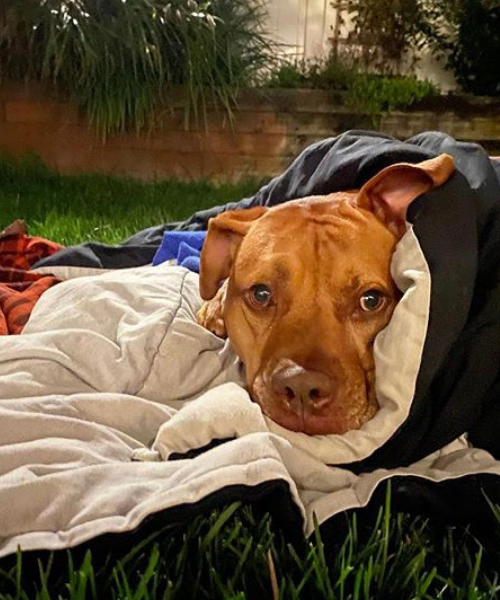
For the ears, we need to consider the position in relation to their version of neutral. Are the ears forward? Pulled back?
If a dog is relaxed or calm, generally the ears are neutral or they may be pulled back a little.
If they are “alert” (maybe they heard something or saw something they are either excited about or nervous about), their ears will point forward and often this can be associated with wrinkled eyebrows. You can typically tell where they are alerting to by where their ears move.
When dogs are super nervous, agitated, or fearful, they may also pull their ears back flat against their head.
MOUTH
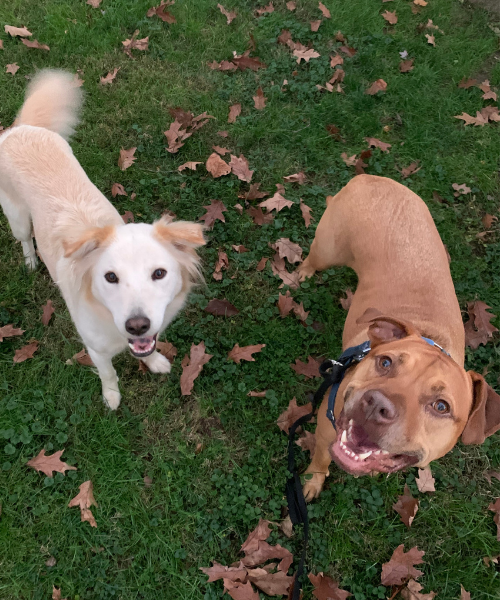
The mouth paired with the eyes may be the MOST telling of all.
When dogs are relaxed, you will notice that their mouth is loose, the sides of the mouth may be relaxed, they may even “smile”.
When dogs are alert, nervous, or fearful, you may see a closed, tight mouth with lips that are drawn back. Sometimes this is referred to as a “long lip” and they may overly salivate.
Additionally, noting when they go from panting happily to a closed, tight mouth may indicate that you should also be on alert to what alerted them (Was there a squirrel? Is their mortal enemy approaching? Or did your partner just whip out some yummy smelling treats?).
Yawning and lip licking outside of the context of food or sleep may also indicate stress or that the dog is calming themselves.
A muzzle that begins to wrinkle may indicate that the dog is expressing serious discomfort and the dog may be using this to make their displeasure unknown. These are completely appropriate dog reactions, and should NOT be punished. Instead, try listening to them. If your dog begins to display signs of discomfort or fear, remove them from the situation. You’ll be surprised at how grateful they may become.
TAIL
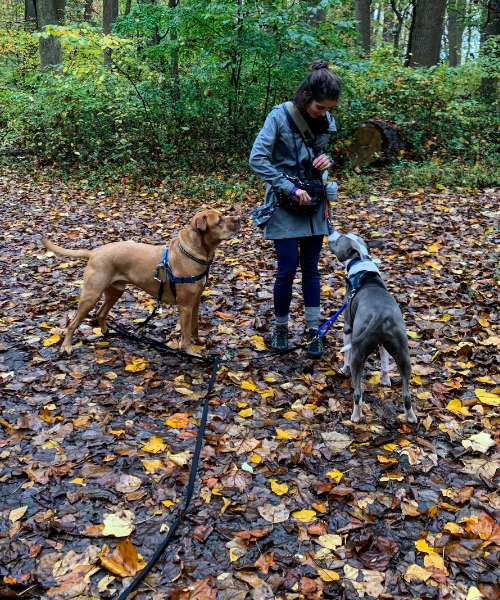
It’s important to consider the position of the tail, and the speed of the tail before we assign an emotion.
For a relaxed or happy dog, the tail looks like a natural and neutral extension of the spine. You will also note a slow, lazy wag. Additionally, the “helicopter” tail wag is a VERY happy dog, it may also be a sweeping calm motion.
For an alert or aroused dog (again, this can be good or bad), the tail will generally rise ABOVE the spine, is generally more rigid, and can vary from fast, slow, or even a metronome speed.
- Short quick movements may indicate alertness/excitement
- Slow and steady may indicate a level of being unsure
- Metronome speed may indicate discomfort/tenseness (watch this one close)
A fearful dog will tuck the tail between their legs. The spine and the tail will almost look like the letter “C” or “O” and generally be very rigid.
SWEAT/PANTING
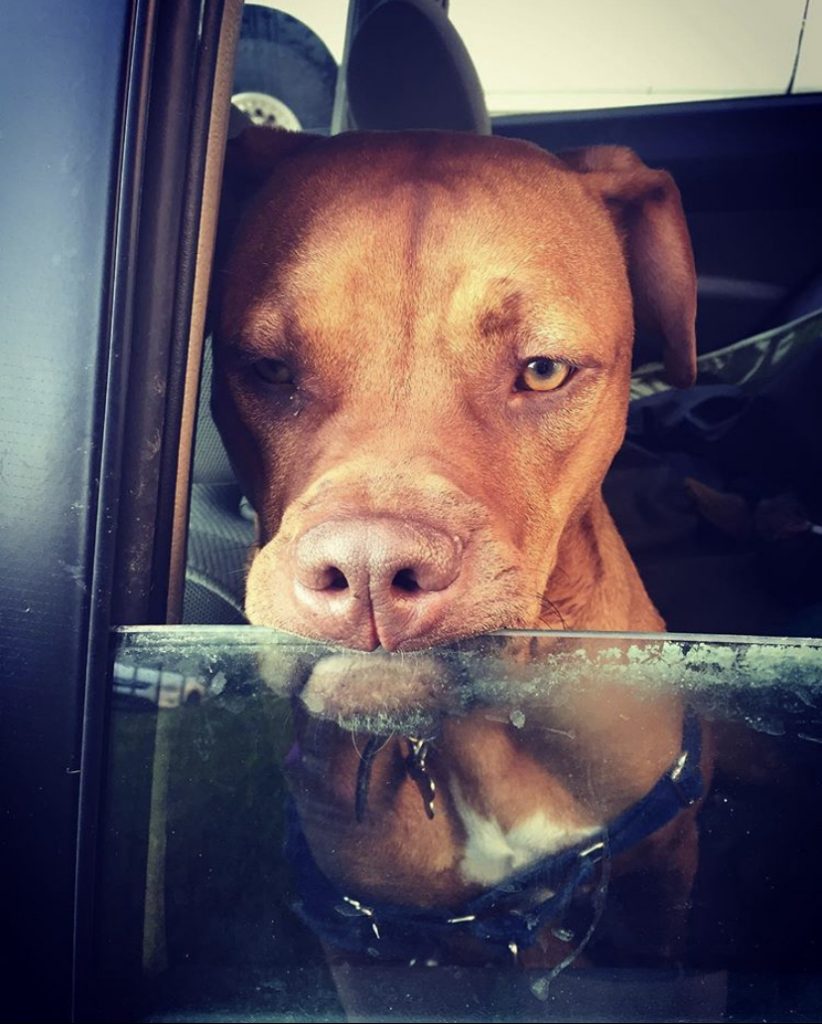
Panting happens after tug, running, play, etc. It is a physiological approach to cool the body, it’s one of the only ways dogs can cool themselves (they can sweat through their paws but it’s not typical).
However, if you notice panting during a situation that does not require the physiological need to pant, this may be a sign of stress or overarousal.
If a dog is sweating through their paws, this dog is particularly upset and this should be noted.
OVERALL BODY POSTURE
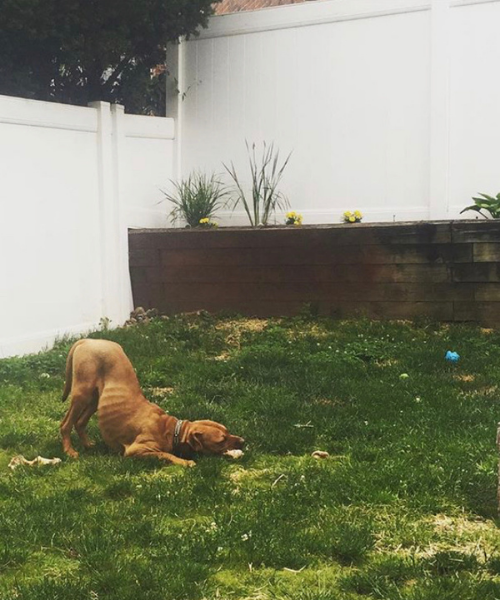
A happy, confident and playful dog will present with overexaggerated movements, loose wiggly bodies, and pauses in play. They may hang their heads, play bow, yip, or bound around.
A tense, unsure, or overly alert dog will be tense, stiff, rigid, head held high. They may “freeze” and this is usually an indication that there will be a correction happening soon (air snap, growl, actual bite), which can escalate into a fight if the other dog does not read the signals correctly or we, as handlers, don’t deescalate the situation
A fearful dog may lean away from the thing that is causing concern for them, they may avoid eye contact or they may cower or lean into their human for support. An extremely fearful dog may turn frantic and try to escape.
As you can see, dogs can tell us a lot just by how they move and interact with their world. Often we have trouble recognizing the signs in time, or at all. Each one of the above pieces plays a part of a puzzle. It is up to us to decipher it. It’s a whole package and it’s important to look at the context. By learning to read our dog’s body language we can develop a deeper level of trust, and a deeper bond with our dogs. They will begin to trust that, as their humans, we understand them and their world becomes more predictable, and we are better able to predict our dogs.

